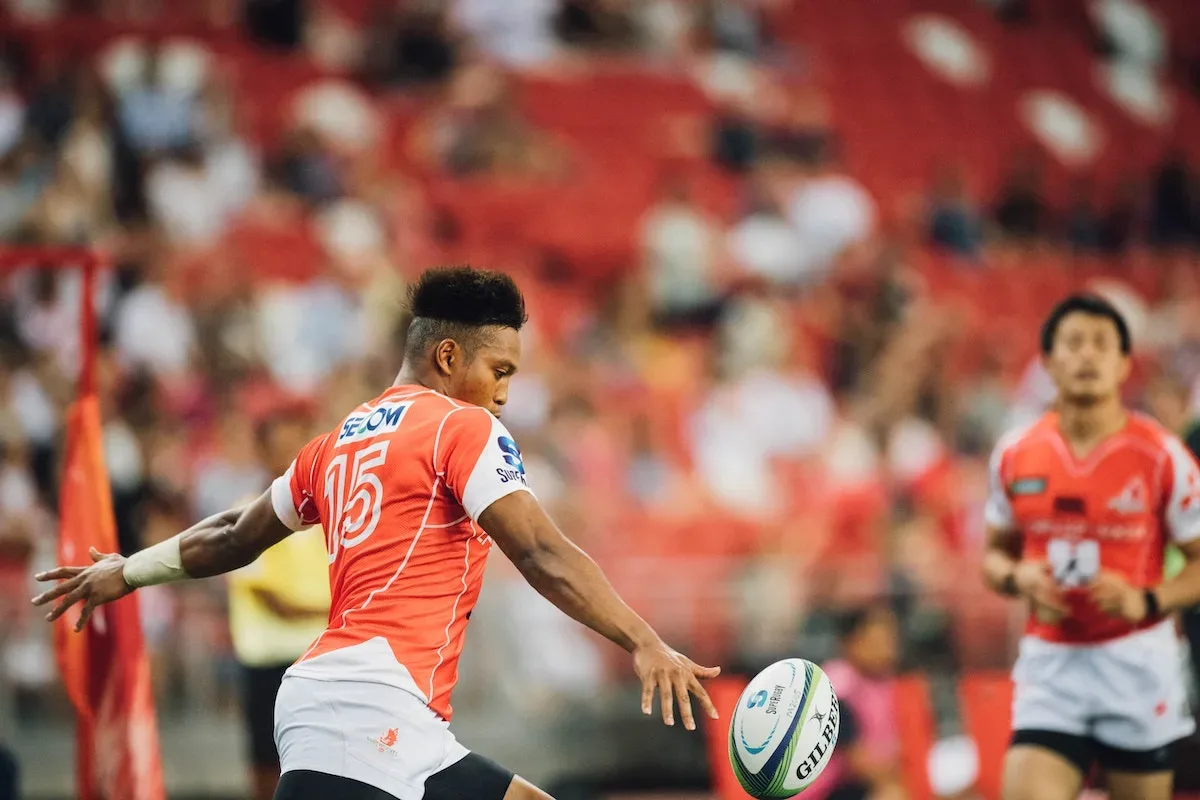In rugby, the drop goal is a game-changer. It can turn the tide of a match in an instant, breaking the deadlock and securing a crucial win. While drop goals are not as common as tries or conversions, they require a specific set of skills and an eye for strategy that sets the best rugby players apart. In this guide, we’ll explore the art of the drop goal in rugby, examining everything from when to use it, to the technique and strategy behind this move.
Understanding the Drop Goal
First things first, what is a drop goal? A drop goal is a type of scoring move in rugby where a player drops the ball onto the ground and then kicks it over the crossbar. Unlike a conversion, which is taken from a tee, a drop goal is taken in open play. It’s worth three points, and can be a game-changer in close matches.
When to Use the Drop Goal
The drop goal is a high-risk, high-reward move that can be used in a variety of situations. Here are some common scenarios where the drop goal can be a valuable play:
- To break a deadlock: If a match is tied, or if one team is only winning by a slim margin, a drop goal can be a game-changer. It can break the deadlock and give the team taking the shot a much-needed boost of confidence.
- To secure a win: If a team is winning but only by a small margin, a drop goal can secure the win. It can also be a useful tactic if a team is losing but within striking distance of a win.
- To catch the opposing team off-guard: If the opposing team is expecting a kick to touch, a drop goal can be a surprise move that catches them off-guard. This can be especially effective if the opposing team is on the defensive and expecting a different type of play.
Technique and Execution
The key to executing a successful drop goal lies in technique. Here are the steps you need to follow to make it happen:
- Set up: The first step is to get into position. You’ll want to be in front of the ball, with your non-kicking foot slightly ahead of your kicking foot. Make sure your body is facing the target, and that your arms are extended out in front of you.
- Drop the ball: Drop the ball from your hands onto the ground. You want it to bounce up slightly so that you can make contact with the sweet spot of your foot.
- Make contact: Once the ball has bounced up, take a step forward and make contact with the ball using the sweet spot of your foot. This is the area just below the laces.
- Follow through: After making contact with the ball, follow through with your kicking leg. This will help to ensure accuracy and power.
Strategy
The drop goal is not just about technique – it’s also about strategy. Here are some key strategic considerations to keep in mind when attempting a drop goal:
- Timing: Knowing when to attempt a drop goal is crucial. As we mentioned earlier, a drop goal can be a valuable play in certain situations, but it’s not always the best option. You’ll need to read the game and make a decision based on the situation at hand.
- Positioning: Positioning is also important. You’ll want to be in the right place on the field to attempt a drop goal. This might mean taking a few steps forward to get closer to the posts, or moving into a particular part of the field where you have a better angle for the kick.
- Communication: Communication is key, especially if you’re playing as part of a team. Make sure your teammates are aware of your intention to attempt a drop goal, and that they are in position to support you if needed.
- Confidence: Finally, confidence is crucial. The drop goal is a high-pressure move, and it requires a lot of mental fortitude to execute successfully. Make sure you have confidence in your own abilities, and that you’re prepared to take the shot when the opportunity arises.
Famous Drop Goals
Over the years, there have been some famous drop goals that have gone down in rugby history. Here are a few of the most notable:
- Jonny Wilkinson’s drop goal in the 2003 Rugby World Cup final: This is perhaps the most famous drop goal in rugby history. With just seconds left on the clock, Wilkinson took a drop goal that secured England’s victory over Australia in the final.
- Rob Andrew’s drop goal in the 1995 Rugby World Cup quarter-final: This drop goal, taken by England’s Rob Andrew, secured a narrow victory over Australia in the quarter-final of the 1995 Rugby World Cup.
- Joel Stransky’s drop goal in the 1995 Rugby World Cup final: This drop goal, taken by South Africa’s Joel Stransky, secured a victory for South Africa over New Zealand in the final of the 1995 Rugby World Cup.
The drop goal is a move that can turn the tide of a rugby match, but it requires a specific set of skills and a keen eye for strategy. By understanding when to use the drop goal, mastering the technique, and developing a strategic approach to the game, you can become a true master of this game-changing move. So next time you’re out on the rugby field, consider the drop goal – it might just be the play that takes your team to victory.
Essential Drop kicking skills
Drop kicking is a fundamental skill in rugby, and it can make a significant difference in the outcome of a match. However, executing a successful drop kick requires mastering several essential skills. Here are the key skills you need to develop to become a master of the drop kick:
Good Ball Control
Ball control is an essential skill in rugby, and it’s particularly important when it comes to drop kicking. You need to be able to control the ball with your hands, whether you’re catching a pass, picking up a loose ball, or collecting a high kick. Without good ball control, you’ll struggle to set up a drop kick and make good contact with the ball.
Accurate Foot Placement
Foot placement is another critical skill for drop kicking. Your non-kicking foot needs to be in the correct position to provide stability and balance, while your kicking foot needs to be in the right position to make good contact with the ball. This takes practice, and you need to develop muscle memory to ensure your foot placement is accurate every time.
Good Timing
Timing is crucial in rugby, and it’s no different when it comes to drop kicking. You need to be able to time your run, your drop, and your kick perfectly to ensure accurate contact with the ball. This takes practice, and it’s something you’ll need to work on until you can execute a drop kick without thinking.
Proper Body Position
Your body position is critical when it comes to drop kicking. You need to be able to drop the ball onto the ground without losing balance or control, and then transfer your weight onto your kicking foot to generate power and accuracy. This requires proper body alignment, with your head up, your shoulders square, and your eyes focused on the ball.
Sweet Spot Accuracy
The sweet spot of your foot is the area just below the laces, and it’s where you want to make contact with the ball when drop kicking. This is the area that will give you the most power and accuracy, and it’s something you’ll need to practice until it becomes second nature.
Confidence
Finally, drop kicking requires confidence. It’s a high-pressure move that can make a significant difference in the outcome of a match, and you need to believe in your abilities to execute it successfully. This means practicing regularly, visualizing yourself making the kick, and staying calm and focused under pressure.
Conclusion
Drop kicking is an essential skill in rugby, and it requires mastering several key skills. Good ball control, accurate foot placement, good timing, proper body position, sweet spot accuracy, and confidence are all critical to executing a successful drop kick. By practicing these skills regularly and incorporating them into your training, you can become a master of the drop kick and take your game to the next level.

